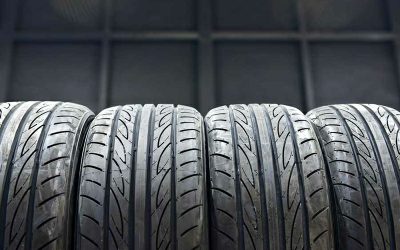In summer, the temperature is high outdoors, it becomes more challenging to keep our vehicles in good condition. One of the first items to consider when it heats up is the tire’s air pressure.
Why Does The Pressure In Your Summer Tires Matter?
If you’re wondering why the very first thing to pay attention to while maintaining your vehicle in summer is tire pressure, here’s why. Simply stated, when the temperature outside rises, so does the temperature in your tires.
Typically, tire pressure climbs by one pound per square inch (PSI) each 10-degree increase in air temperature. Since tire pressure in most vehicles ranges from 30 to 35 PSI, the above pressure rise may not seem noticeable.
However, if you’re not aware of the pressure sensitivity of your tires during humid weather conditions, a 1-PSI rise may make the tire burst.
Car tire pressure is crucial in ensuring a safe trip on the road. The right tire pressure is a must to drive confidently with a firmly handling vehicle and durable tires.
Furthermore, maintaining proper tire pressure may help other components of your vehicle operate more efficiently and smoothly. The responsiveness of your brakes, a smoother ride, and improved fuel economy are just a few of the benefits.
Check Tire Pressure For Safer Summer Drives
So, how much does tire pressure increase when hot? As the temperature rises, tire pressure in summer rises as well. Scientists discovered that when the temperature increases by 10 degrees (Fahrenheit), the tire pressure climbs by one pound per square inch (PSI).
Note: Since the tire pressure increases as the tires get hot, your reading can be affected if your car is left in full sunshine or on hot pavement for an extended period.
View more: How to deal with Tire Bulge
What To Look Out For To Avoid A Blowout?
It’s a legitimate reason to worry about your tires at any time of year, but it makes more sense in the summer. Here are several indicators that you should stop and let your tires cool down.
Tires That Are Too Hot To Handle
The way your tires feel is the most apparent indication that they are overheating. It’s a sign of overheating if they’re hot to the touch.
Air Pressure That Is Too High
If your tire’s pressure is too high due to the heat, a tire pressure gauge will inform you. But don’t count on the tire pressure monitoring system (TPMS) on the dashboard to keep you safe.
Many modern cars include this monitoring system to notify you if the pressure is too low, but it will not warn you if the pressure is too high. For that reason, old-school approaches such as doing an eyeball test and using a manual gauge will be more reliable.
Summer Tire Maintenance Checklist
Safe driving begins with completing a state-approved driver’s education course, knowing the laws of the road, and maintaining your car, whether you reside in Texas, California, Florida, Georgia, or any other state.
You can’t do much about the heat, but you may take precautions to prevent a tire blowout on your next summer trip.

Maintain Proper Tire Inflation
Tires must have a specific level of air pressure to be safe on the road. Depending on the vehicle you drive, the appropriate quantity of air pressure may vary.
Follow the manufacturer’s advice, which is commonly written on the driver’s door jamb placard and in the owner’s manual. Make sure you don’t mix up the recommended inflation level with the maximum amount stated on the tire.
Keep An Eye On Your Summer Tire Pressure
Before you start driving, check the air pressure using a gauge. If you suspect overinflation, check it every two hours or every 100 miles.
Wait Until Your Tires Have Cooled Down Before Driving
You may believe that the best thing to do is to let a little air out of the tires so that you can continue driving. It’s a false assumption!
If you let the air out, you risk driving on under-inflated tires, which is just as hazardous. The best course of action is to wait until the tires have cooled down before getting back on the road.
Tires That Are Worn Out Should Be Replaced
A blowout is more likely if your tires are already worn thin. Consider investing in a set of summer tires. These tires will perform better in hot weather.
Wheels Should Be Cleaned And Treated
Tires treated with a wax-based substance are less likely to dry up, reducing the risk of a blowout.
Conclusion
Now you know the answer, get your car checkup and tire pressure checked. Inspect the condition of your existing tires, inflate them to the proper PSI, and purchase new tires if necessary.
See also:








